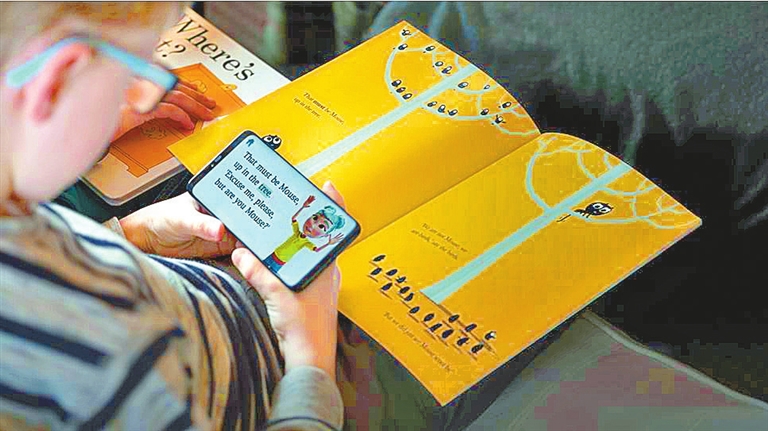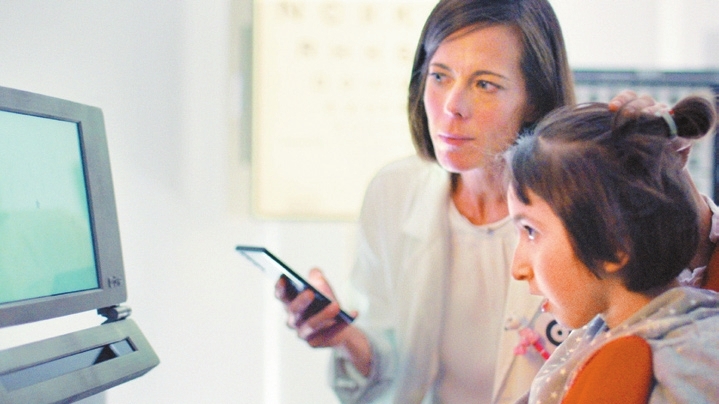

AI has reshaped the world around us and how we interact with our surroundings. When you take a photo with your phone, the AI camera can identify what’s in the frame (for example, the blue sky or spread of food), and apply intelligent enhancements that correspond to the scene, generating detailed and vibrant images. You can remain productive, even when your hands are occupied, thanks to voice assistants like HiVoice or Siri on your phone. Make payments with AI-powered face recognition, in which your phone stores and analyzes your facial profile, even recognizing your behavioral patterns, to determine when it is you making a purchase, or logging in to an account. Since the advent of Huawei’s Kirin 970 in 2017, HUAWEI HiAI has focused on applying innovative new technology from the bottom layer of the system on up. Distributed intelligence forms the key to transforming device software and hardware from isolated capabilities into a collaborative, mutually-reinforcing ecosystem. In this way, HUAWEI HiAI enables software and hardware makers to facilitate innovation in their respective areas of expertise, and contribute to the seamless user experience of tomorrow. AI cares... Huawei has teamed up with IIS Aragon and DIVE Medical to jointly launch the TrackAI project, which is dedicated to helping ophthalmologists run visual tests for children, using Huawei smart devices equipped with HiAI. Numerous medical institutes around the world, in China, Spain, Vietnam, Mexico, and Russia, among other countries, have begun amassing the plethora of data required to train the AI algorithm, through their work with over 2,000 visually-impaired children. Huawei has drawn on AI to improve the lives of those living with disabilities, in a myriad of other ways. There is StorySign, an app that helps deaf children read by translating the text from selected books into sign language. Huawei partnered with the European Union of the Deaf, Penguin Books and Aardman Animations, as well as other organizations, in developing StorySign. When a child opens a selected reading book in front of them, then opens the app and holds the phone over the page, an avatar signs the story, while the app highlights each word that has been signed. Thanks to multilingual Optical Character Recognition (OCR) and document adjustment technology, StorySign now supports more than 10 European sign languages. Huawei has also provided crucial assistance to the Chinese-developed Qimingtong app, which is designed to help the visually-impaired better interact with the world around them. The app reads text out loud, such as that from newspaper articles, letters, and product user guides. It also leverages HUAWEI HiAI capabilities, including face detection and facial feature detection, and enables the visually-impaired to take pictures following simple voice instructions. AI empowers... Developers are dreamers, and HUAWEI HiAI is the platform that helps them fulfill their dreams. Since its debut in 2018, HUAWEI HiAI has connected more than one million developers and 4,000 partners. SketchAR, a tool for teaching drawing using augmented reality (AR) and AI, offers a prime exactly of how HiAI has revolutionized user experience. It enables users to transmit an image from their device onto any surface, such as a sheet of paper or white wall. The image can then be used on their device as a template for manually drawing on the surface of choice. SketchAR utilizes HUAWEI HiAI’s NPU acceleration, to boost image recognition speeds by up to 40 percent, for improved accuracy and greater responsiveness. The Chinese-developed app Lvmuxia (Green Screen Compositor) helps users composite a captured video with a background video. Typically, green screen compositing requires powerful computing capabilities, and could previously only be accomplished on the cloud. But as on-cloud computing poses a number of challenges for developers, including high costs, high latency, and privacy risks, it was not practical. By working with HUAWEI HiAI, the Lvmuxia app has overcome those challenges, providing on-device AI capabilities and shortening the app’s time to market. While attending a conference or lecture, you may want to take photos of the PowerPoint slides for future reference, but the quality of the images can be poor, particularly if you were seated in a corner, or there is some sort of visual obstruction. HiAI provides an elegant solution, with its document adjustment feature, in which photos are straightened, clarifying text and removing unwanted corners. From single-device AI to distributed AI In November 2019, Huawei introduced HiAI 3.0, an open AI capability platform that allows smart devices to share AI computing power between them, representing the tremendous leap from single-device AI to distributed AI. In its infancy, HUAWEI HiAI 1.0 only supported single type devices. 2.0 expanded to support such devices as phones, tablets and smart screens. HUAWEI HiAI 3.0 goes even further, pooling hardware resources to form a super device. Powered by distributed AI, devices mutually reinforce each other, providing users with the best possible experience, given the resources at its disposal. Smart devices are designed to fulfill specific needs, but each category of device comes with drawbacks. For example, smart TVs, watches, and earphones excel in collecting images, videos, and sensor data, but fall short in terms of sheer AI computing power. Smart phones are equipped with increasingly powerful photography features, but still don’t compare to dedicated televisions and surveillance cameras, in many regards. Huawei developed HiAI 3.0 in response to the ever-present need for enhanced capabilities on smart devices. By drawing from such basic distributed technologies as distributed virtual bus and device virtualization, HUAWEI HiAI 3.0 facilitates high-speed connectivity between devices, allowing them to share capabilities and reinforce each other. This has seemingly countless applications in real life. For example, fitness apps have often been regarded as less effective than professional personal trainers. But HiAI 3.0 helps turn such apps into viable personal trainers in their own right. HiAI 3.0 connects the user’s smart TV, phone, and speaker to form a wholly-integrated, super intelligent system. The system can use the TV’s camera to capture the user’s posture, the phone’s AI computing power to analyze the images, and determine whether the user’s posture is standard based on their skeleton information, before finally having the speaker remind the user to correct their posture by voice. This basic understanding underpins the new paradigm that is Huawei’s Seamless AI Life strategy — unbounded intelligence in all scenarios. Powered by AI, diverse hardware resources, including those from smart phones, are pooled, and mutually reinforcing, providing the seamless flow of information across all usage scenarios, and the connected intelligence that will power innovation. | 
